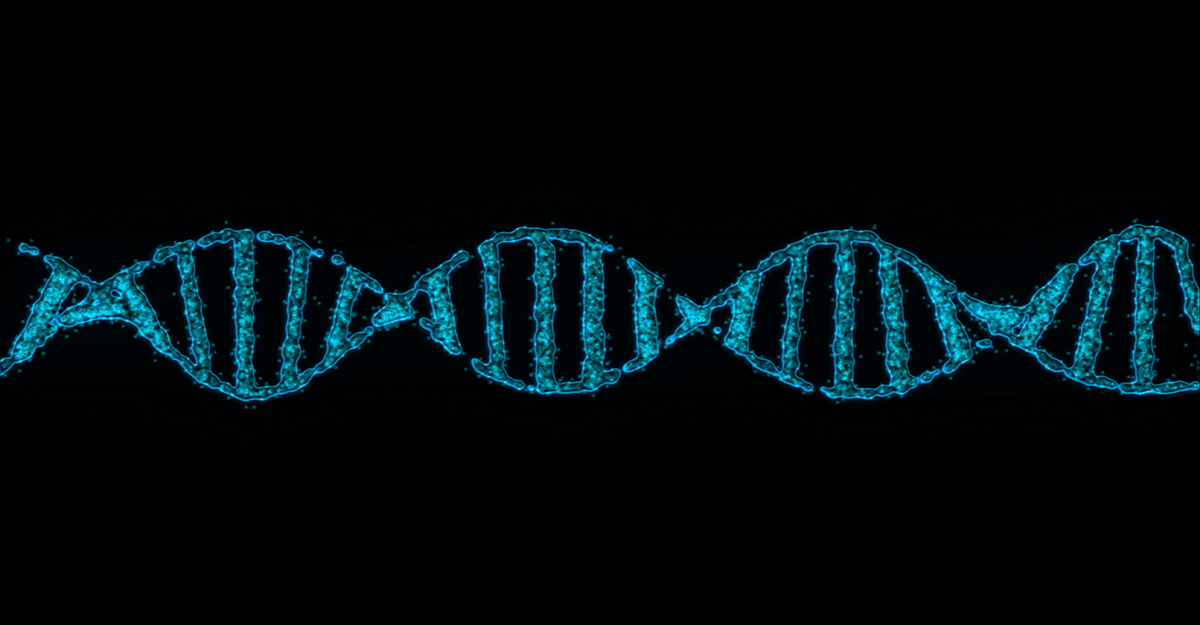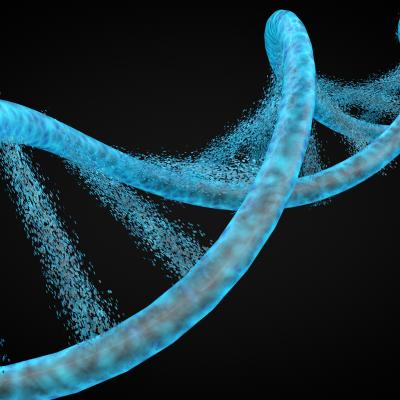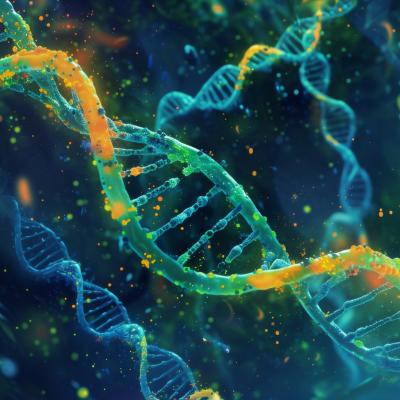Anúncios
The discovery of the DNA structure, made by James Watson, Francis Crick, and Rosalind Franklin in the 1950s, represented a scientific revolution. The double helix model they developed revealed how genetic information is stored and transmitted. This milestone drove advancements in various fields of biology and medicine, laying the foundations for modern molecular biology.
In addition to providing an explanation for genetic replication processes, the discovery impacted areas such as genetics, biotechnology, and personalized medicine. The joint work of the scientists, who relied on X-ray diffraction images from Franklin, exemplified the power of scientific collaboration. This contribution continues to shape contemporary science and its practical applications.
Anúncios

How the Discovery of the DNA Structure by Watson, Crick, and Franklin Changed Science
The groundbreaking discovery of the DNA structure by James Watson, Francis Crick, and Rosalind Franklin in the early 1950s marked a crucial moment in the history of science. Their collaborative efforts revealed the double helix model of DNA, which not only explained how genetic information is stored and transmitted but also laid the groundwork for modern genetics and molecular biology. This discovery revolutionized our understanding of heredity, evolution, and the fundamental processes of life. The implications of their discoveries extended beyond the laboratory, influencing various areas, including medicine, forensic science, and biotechnology.
The importance of Watson and Crick’s work cannot be underestimated. Before their discovery, the structure of DNA remained a mystery, hindering scientific progress in genetics. By using experimental data, particularly the X-ray diffraction images from Rosalind Franklin, they were able to propose a model that elegantly explained the molecular architecture of DNA. This model not only illustrated how DNA replicates but also provided insights into how genes are expressed and regulated. As a result, the discovery of the DNA structure had a profound impact on various scientific disciplines, leading to advancements in genetic engineering, personalized medicine, and our understanding of complex diseases.
Advantages of Understanding the DNA Structure Through the Work of Watson, Crick, and Franklin
Understanding the structure of DNA brought numerous advantages that transformed the landscape of biological research and its applications. One of the main benefits is the ability to manipulate genetic material with precision. The elucidation of the double helix structure paved the way for techniques like recombinant DNA technology, which allows scientists to combine genes from different organisms and create genetically modified organisms (GMOs). This has profound implications for agriculture, where genetically engineered crops can be designed to resist pests, tolerate harsh environmental conditions, and increase nutritional content.
Another significant advantage of understanding the DNA structure is its impact on medicine. The knowledge gained from the double helix model led to advancements in understanding genetic disorders and the development of targeted therapies. With the ability to sequence genomes, researchers can identify mutations associated with diseases, leading to personalized treatment plans tailored to an individual’s genetic profile. This has revolutionized the field of oncology, enabling more effective treatments based on the genetic profile of tumors.
Furthermore, insights gained from the study of the DNA structure accelerated advances in forensic science. The ability to analyze DNA transformed criminal investigations and paternity testing, providing reliable methods for identifying individuals based on their unique genetic signatures. This not only improved the accuracy of criminal justice processes but also exonerated wrongfully convicted individuals, highlighting the ethical implications of DNA analysis.
Finally, the understanding of the DNA structure fueled research in evolutionary biology. By comparing the DNA sequences of different species, scientists can trace evolutionary relationships and gain insights into the mechanisms of evolution. This has enriched our understanding of biodiversity and the processes that drive natural selection, allowing researchers to address pressing issues such as conservation and species extinction.
How the Discovery of the DNA Structure by Watson, Crick, and Franklin Influenced Modern Science

The discovery of the DNA structure by Watson, Crick, and Franklin had a profound and lasting impact on modern science. One of the most significant influences is the establishment of the double helix model, which became a cornerstone of molecular biology. This model not only elucidates the physical structure of DNA but also provides a framework for understanding the processes of replication, transcription, and translation. The complementary base-pairing mechanism of the double helix ensures the accurate replication of DNA, essential for cell division and the maintenance of genetic integrity.
The importance of scientific collaboration is another key aspect highlighted by this discovery. Watson and Crick’s ability to synthesize information from various sources, including Franklin’s X-ray diffraction images and Chargaff’s base-pairing rules, underscores the value of interdisciplinary cooperation in scientific research. Their collaborative approach exemplifies how diverse perspectives and expertise can lead to innovative discoveries that advance our understanding of complex biological systems.
The impact of this discovery on the history of genetic research cannot be overstated. It marked the beginning of a new era in genetics, paving the way for the development of molecular genetics as a distinct field of study. Researchers began to explore the mechanisms of gene expression, regulation, and inheritance at the molecular level, leading to the identification of numerous genes associated with specific traits and diseases. This laid the foundation for modern genetic research, including the Human Genome Project, which aimed to map the entire human genome.
Rosalind Franklin’s contributions, often overlooked in discussions about the discovery of the DNA structure, are crucial to acknowledge. Her meticulous work in X-ray crystallography provided the critical data that informed Watson and Crick’s model. Franklin’s expertise in crystallography not only advanced the understanding of DNA but also highlighted the importance of recognizing and crediting the contributions of all scientists in collaborative research efforts. Her legacy continues to inspire future generations of scientists, especially women in STEM fields.
- Understanding the double helix model: The structure of the DNA double helix is essential for understanding how genetic information is stored, replicated, and transmitted across generations. This model provides insights into the mechanisms of heredity and the molecular basis of genetic variation.
- The importance of scientific collaboration: The discovery of the DNA structure exemplifies the power of collaboration in science. Watson and Crick’s ability to integrate discoveries from various researchers, including Rosalind Franklin, demonstrates how teamwork can lead to significant scientific advancements.
- Impact on the history of genetic research: The elucidation of the DNA structure marked the beginning of molecular genetics, leading to advancements in gene mapping, genetic engineering, and our understanding of genetic diseases. This transformed the field of biology and medicine.
- Contributions of Rosalind Franklin: Rosalind Franklin’s pioneering work in X-ray crystallography was instrumental in revealing the structure of DNA. Her contributions emphasize the importance of recognizing the roles of all scientists in collaborative research efforts.
- Advancements in molecular biology: Understanding the structure of DNA led to the development of various techniques in molecular biology, including PCR, gene cloning, and CRISPR technology. These advancements revolutionized research and applications in genetics.
- The role of nucleic acids research: The study of nucleic acids, including DNA and RNA, has become a central focus of biological research. Understanding their structure and function is crucial for exploring cellular processes, gene regulation, and disease mechanisms.
In conclusion, the discovery of the DNA structure by Watson, Crick, and Franklin profoundly influenced modern science. The insights gained from this discovery led to significant advancements in genetics, medicine, and molecular biology. The collaborative nature of this research serves as a reminder of the importance of teamwork in scientific endeavors, while the contributions of all the scientists involved highlight the need to recognize and appreciate diverse perspectives in the quest for knowledge.
Did You Enjoy Learning About the Discovery of the DNA Structure by Watson, Crick, and Franklin?

Learning about the discovery of the DNA structure by Watson, Crick, and Franklin offers a fascinating insight into the world of scientific discovery and collaboration. The impact of their work continues to reverberate in various fields, shaping our understanding of life itself. As we explore the intricate details of genetics and molecular biology, we uncover the profound implications of this groundbreaking discovery for future generations.
The journey of understanding the DNA structure is not just a historical narrative; it is a testament to the power of curiosity, collaboration, and perseverance in the pursuit of knowledge. As science continues to evolve, the legacy of Watson, Crick, and Franklin serves as an inspiration for aspiring scientists and researchers, encouraging them to explore the mysteries of life and contribute to the growing body of scientific knowledge.
Frequently Asked Questions
What is the discovery of the DNA structure by Watson, Crick, and Franklin?
The discovery of the DNA structure is about how the DNA molecule is formed. Watson and Crick created a double helix model, while Franklin took pictures that helped.
Why is the discovery important?
It is crucial because DNA is the blueprint of life. Understanding its structure helps in genetics, medicine, and biology.
What was Rosalind Franklin’s role?
Rosalind Franklin used X-rays to discover the DNA structure. Her images were essential for Watson and Crick.
When did this discovery happen?
The discovery of the DNA structure took place in 1953. It was an incredible moment in science!
Did they receive awards for this?
Yes! Watson, Crick, and others won the Nobel Prize in 1962. Franklin did not receive the award, but her work is recognized.
Let me know if you need anything else!
